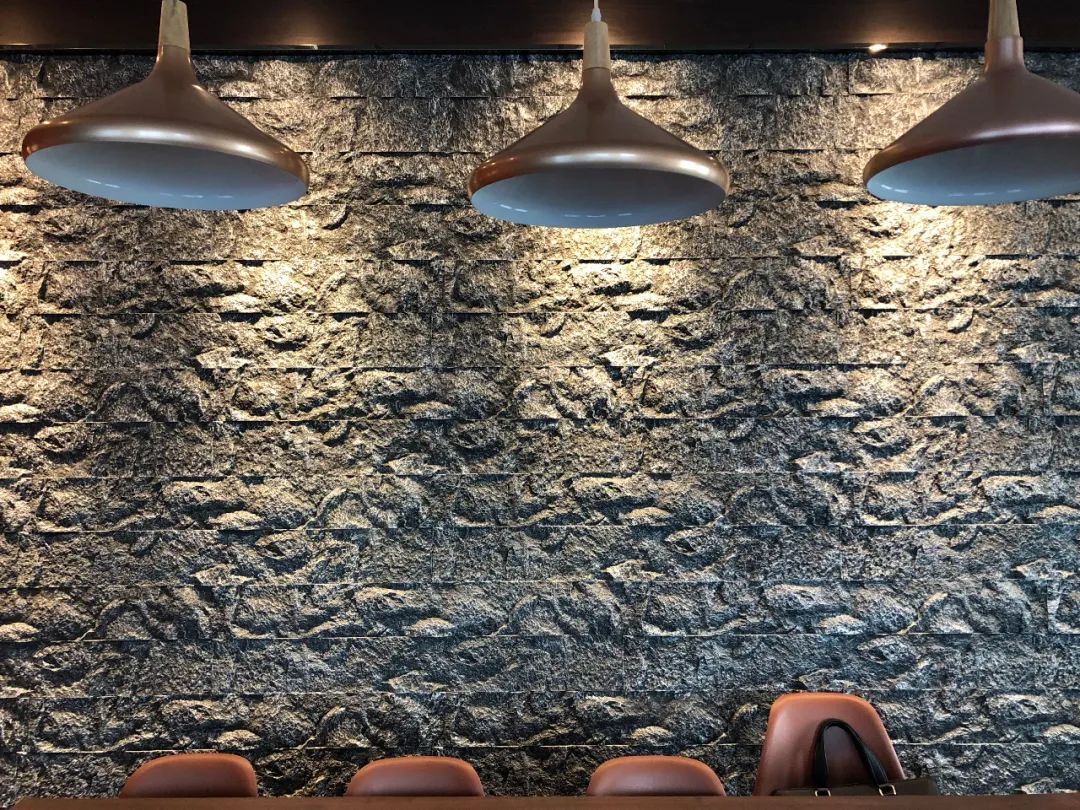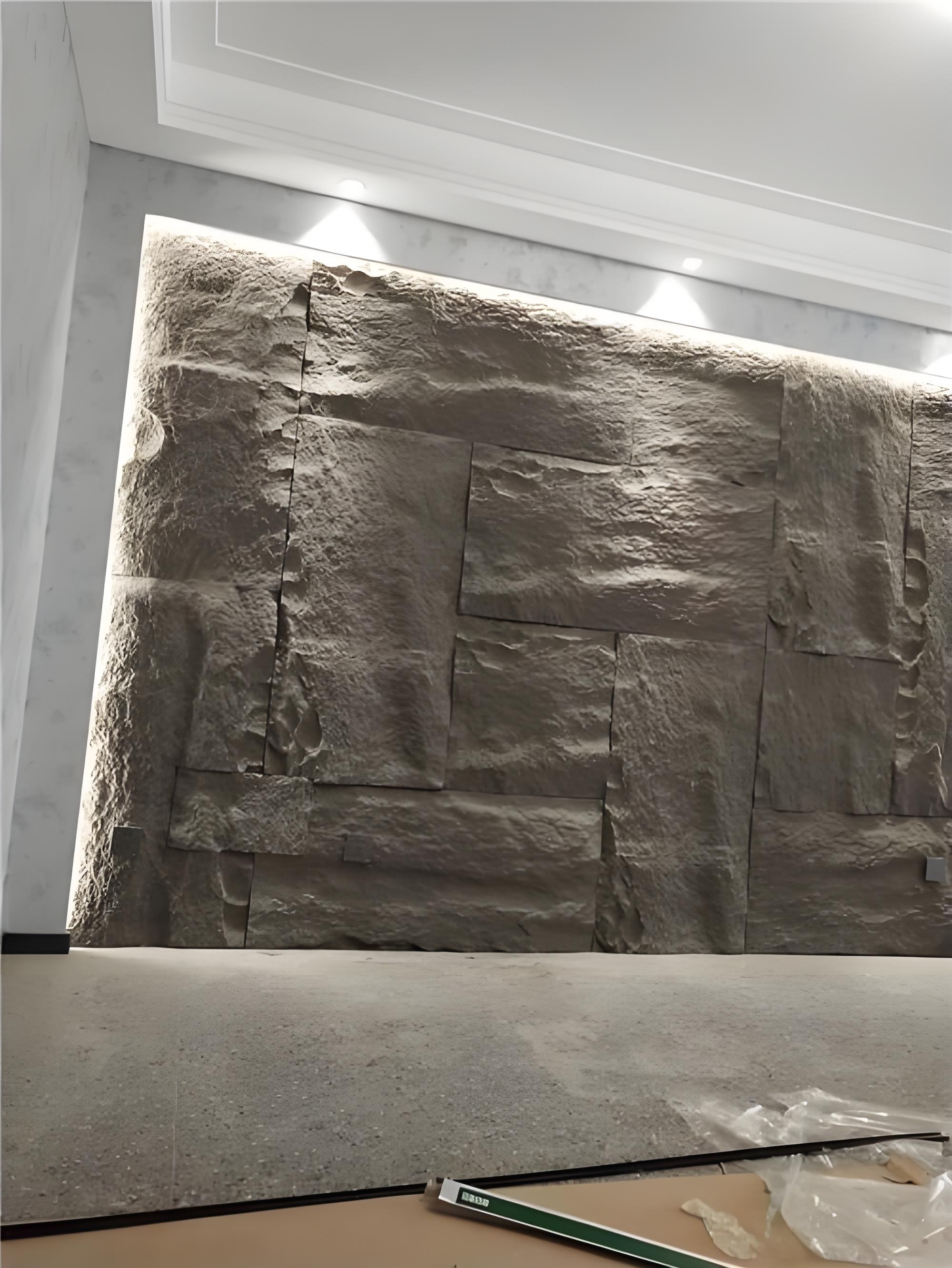Having worked in the interior and exterior design industry for over a decade, I’ve seen PU stone decorative panels (polyurethane stone panels) become a go-to choice for those seeking the elegance of natural stone without the hefty price tag or installation challenges. These lightweight, versatile panels are a favorite for creating stunning feature walls, facades, and accents. But a question I often hear from clients and DIY enthusiasts alike is: Can PU stone panels be used outdoors? The answer isn’t a simple yes or no—it depends on several factors like material quality, weather conditions, and maintenance. Drawing from my experience with PU stone in various projects, I’ll explore whether these panels are suitable for outdoor use, the challenges you might face, and practical tips to ensure they stand the test of time.

What Is PU Stone, and Why Consider It for Outdoor Use?
PU stone is a synthetic material made from polyurethane resin, often blended with stone powder or other fillers to mimic the texture and appearance of natural stone like slate, granite, or limestone. Its lightweight nature (often 1/10th the weight of real stone), ease of installation, and affordability make it appealing for both indoor and outdoor applications. I first used PU stone for an outdoor patio wall project, and the result was a rustic, stone-like aesthetic that transformed the space without breaking the bank.
However, outdoor environments are far harsher than indoor ones, with exposure to sunlight, rain, temperature swings, and humidity. These conditions can test the durability of any material, especially a synthetic one like PU stone. Below, I’ll dive into the key considerations for using PU stone outdoors and how to make it work effectively.
Can PU Stone Panels Be Used Outdoors?
Yes, PU stone panels can be used outdoors, but not all panels are created equal. The suitability of PU stone for exterior applications depends on the material quality, protective coatings, installation methods, and environmental conditions. While some high-quality PU stone panels are specifically designed for outdoor use, others are better suited for indoor settings. Let’s break down the factors that determine whether your PU stone panels can withstand the elements.
Key Factors to Consider for Outdoor Use
1. Material Quality and Weather Resistance
Not all PU stone panels are built to handle outdoor conditions. High-quality panels are formulated with UV-resistant additives and water-repellent coatings to protect against sun damage and moisture. I once installed budget PU stone panels on an outdoor fence, only to see them fade and crack after a year of sun exposure. In contrast, a later project using premium, UV-treated panels held up beautifully for over three years.
High-Density PU Stone: Panels with higher density and stone-like fillers are more durable and less prone to cracking or warping.
Low-Quality PU Stone: Cheaper panels often use softer, foam-like polyurethane that degrades quickly outdoors.
My Tip: Look for panels labeled “outdoor-grade” or “weather-resistant” in the product description. Brands like Eldorado Stone or NextStone often specify outdoor suitability.

2. Protective Coatings
Most PU stone panels come with a factory-applied protective coating to shield against UV rays, water, and temperature changes. This coating is critical for outdoor use, as it prevents fading, water absorption, and cracking. However, not all coatings are equal—some are thin and wear off quickly, while others are robust and long-lasting. I learned this when a client’s outdoor PU stone wall started peeling after a rainy season due to a subpar coating.
My Tip: Check if the panels have a UV-resistant polyurethane coating or a waterproof sealant. If not, you’ll need to apply a sealant yourself.
3. Environmental Conditions
The climate in your area plays a huge role. I’ve worked on projects in both arid deserts and humid coastal regions, and the results vary:
Hot and Sunny Climates: Prolonged UV exposure can fade or weaken PU stone without proper protection.
Wet and Humid Climates: Moisture can seep into uncoated or poorly sealed panels, causing mold or swelling.
Freeze-Thaw Cycles: In cold climates, water trapped in the panels can freeze, expand, and crack the material.
My Tip: In harsh climates, choose panels with enhanced UV protection and waterproofing, and ensure proper installation to minimize water infiltration.

4. Installation Quality
Proper installation is critical for outdoor PU stone. Unlike natural stone, which is heavy and stable, PU stone’s lightweight nature makes it prone to shifting or detaching if not secured properly. I once saw a poorly installed PU stone facade peel off during a storm because the adhesive wasn’t weather-resistant.
Adhesives: Use a high-strength, weatherproof adhesive like polyurethane-based construction glue.
Sealing Joints: Apply a silicone sealant to gaps between panels to prevent water seepage.
Substrate Preparation: Ensure the wall or surface is clean, dry, and stable to support the panels.
|
Factor |
Impact on Outdoor Use |
Consideration |
Recommended Action |
|---|---|---|---|
|
Material Quality |
Low-quality panels fade or crack |
Choose high-density, UV-resistant panels |
Check for “outdoor-grade” labels |
|
Protective Coating |
Thin coatings wear off quickly |
Verify UV and waterproof coating |
Apply additional sealant if needed |
|
Climate |
Harsh weather accelerates damage |
Assess local conditions |
Use enhanced coatings in extreme climates |
|
Installation |
Poor adhesion leads to detachment |
Use weatherproof adhesives |
Seal joints and prepare substrate |
How to Use PU Stone Panels Outdoors: My Practical Guide
If you’ve decided to use PU stone panels for an outdoor project, here’s my step-by-step approach to ensure durability and a professional finish:
1. Choose the Right Panels
Not all PU stone is suitable for outdoor use. I always check the manufacturer’s specifications for:
UV Resistance: Ensures the panels won’t fade under sunlight.
Waterproofing: Prevents moisture absorption and mold growth.
Durability Rating: Look for panels rated for outdoor use, often marked as “exterior-grade.”
Brands I Recommend: NextStone, Eldorado Stone, and Texture Plus offer outdoor-rated PU stone panels with solid track records.
2. Prepare the Surface
A stable, clean surface is essential for outdoor installations. I’ve seen panels fail because the substrate wasn’t properly prepped.
Clean the wall to remove dirt, dust, or grease.
Ensure the surface is dry and structurally sound (e.g., concrete, brick, or cement board).
For wood or metal substrates, apply a weatherproof primer to enhance adhesion.

3. Use Weatherproof Adhesives and Sealants
For outdoor projects, I rely on polyurethane-based adhesives like Loctite PL Premium or Sikaflex, which are flexible and weather-resistant. After installing the panels:
Apply a silicone sealant to joints and edges to prevent water infiltration.
For extra protection, coat the entire surface with a UV-resistant polyurethane sealant like Rust-Oleum Specialty Polyurethane.
4. Install with Care
Cut Panels Precisely: Use a fine-tooth saw or utility knife to avoid jagged edges.
Secure Tightly: Apply adhesive evenly and press panels firmly to avoid gaps.
Check Alignment: Use a level to ensure panels are straight, especially for large facades.
5. Maintain the Panels
Outdoor PU stone requires regular maintenance to stay in top shape:
Clean Annually: Use a mild detergent and soft brush to remove dirt or algae. Avoid pressure washers, as they can damage the coating.
Inspect for Damage: Check for cracks or loose panels after extreme weather.
Reapply Sealant: Every 1-2 years, apply a fresh coat of UV-resistant sealant to maintain protection.

Challenges of Using PU Stone Outdoors
While PU stone can work outdoors, it’s not without challenges. Here are some issues I’ve encountered and how to address them:
1. Fading from UV Exposure
Without proper UV protection, PU stone can fade or yellow. I once used a budget brand for an outdoor accent wall, and within 18 months, the vibrant gray tones turned dull.
Solution: Choose panels with built-in UV inhibitors, and apply a UV-resistant sealant every 1-2 years.
2. Water Damage
Unsealed or poorly installed panels can absorb water, leading to swelling, mold, or cracking. In a coastal project, I saw uncoated PU stone panels develop mold after heavy rains.
Solution: Ensure all joints are sealed, and apply a waterproof sealant to the entire surface.
3. Temperature Extremes
In areas with freeze-thaw cycles, water trapped in panels can freeze and crack the material. I’ve seen this in colder climates where panels weren’t properly sealed.
Solution: Use a high-quality sealant and ensure proper drainage to prevent water pooling.
4. Adhesion Issues
Outdoor conditions like humidity or temperature swings can weaken adhesive bonds. I had a project where panels detached because the adhesive wasn’t rated for outdoor use.
Solution: Use a weatherproof, flexible adhesive and follow the manufacturer’s installation guidelines.

Alternatives to PU Stone for Outdoor Use
If you’re hesitant about using PU stone outdoors, consider these alternatives:
Natural Stone: More durable but heavier and pricier. Options like slate or granite are ideal for permanent installations.
Brick Veneer: Offers a similar aesthetic with better weather resistance but requires more installation effort.
Fiber Cement Panels: Lightweight and weather-resistant, these are a good middle ground between PU stone and natural stone.
My Experience: Outdoor PU Stone Done Right
One of my favorite projects was installing PU stone panels on an outdoor patio wall for a client in a sunny, coastal area. I chose NextStone panels with a UV-resistant coating and sealed the joints with silicone. Three years later, the wall still looks as good as new, with no fading or water damage. However, I’ve also had less successful projects—like using a cheaper brand without proper sealing, which led to fading and peeling after a year. Those lessons taught me the importance of choosing quality panels and investing in proper installation and maintenance.
Using PU stone outdoors is absolutely possible, but it requires careful selection, installation, and upkeep. With the right approach, you can enjoy the beauty of stone-like aesthetics without the drawbacks of natural stone. If you’re planning an outdoor PU stone project or have specific concerns, feel free to share in the comments—I’d love to offer tailored advice based on my experiences!

Frequently Asked Questions
Q1: Are all PU stone panels suitable for outdoor use?
A: No, only panels labeled “outdoor-grade” or “weather-resistant” with UV and waterproof coatings are suitable. Check the manufacturer’s specifications before purchasing.
Q2: How do I protect PU stone panels from fading outdoors?
A: Choose panels with UV-resistant additives and apply a UV-resistant polyurethane sealant every 1-2 years to maintain color and durability.
Q3: Can PU stone panels withstand rain and snow?
A: Yes, if properly sealed and installed with weatherproof adhesives. Ensure joints are sealed with silicone to prevent water infiltration, especially in freeze-thaw climates.
Q4: How often should I maintain outdoor PU stone panels?
A: Clean annually with mild detergent and a soft brush. Inspect for damage after extreme weather and reapply a UV-resistant sealant every 1-2 years.




